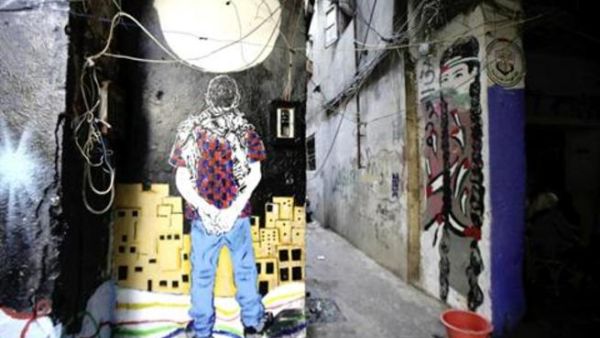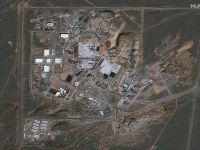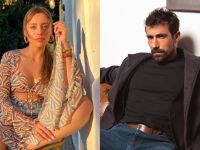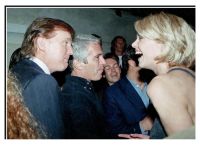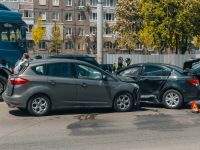As Palestinians in Lebanon prepare to commemorate 30 years since the Sabra and Shatila massacres, international artists have come together in Shatila to create a series of murals to express solidarity and honor 64 years of Palestinian resilience. The handful of artists come from Palestine, the United States, Jordan, Egypt and other parts of Lebanon. With the help of children and other residents of the camp, they spent two weeks designing and painting the mural entitled “Mourning and Action,” which covers 2,000 square feet of the walls in Shatila Mosque Square.
For Susan Greene, director of Break the Silence Mural and Arts Project USA, the project is an important occasion to educate Americans about the massacres. Carried out during the Israeli army’s occupation of Beirut, the massacres were perpetrated by Israeli-allied Christian militias who stormed the camps on Sept. 16, 1982. Casualty estimates range from 800 to 3,500 dead.
“We’re a group of people and artists that want to use culture to raise awareness in the United States and the West about what’s happening to Palestinians,” said Greene, whose organization has been working in the West Bank, Gaza and the U.S. for 22 years, supporting public art, offering workshops and arts trainings and organizing exhibitions of Palestinian art.
The project, which concluded Friday, is a collaboration between Greene’s organization and Lebanon’s Al-Jana Arab Resource Center for Popular arts. Also participating in the mural project were artists from Al-Jana’s annual summer encounter, which trains educators and artists to work with children in marginalized communities.
Hicham Kayed, multimedia and programs coordinator for Al-Jana, estimated that about 20 children helped the artists to paint the mural each day.
“The aim of this work,” Kayed said, “is to support people who live in the camp and also to [help them] feel that people from outside, from the United States and the Arab world, are still thinking about them, how they live and also to support them in many ways.”
The mural depicts images of Palestinian towns, nature, faces of women and witnesses of the massacres as well excerpts from the poetry of Palestinian cultural icon Mahmoud Darwish. Painted wires span the bottom level of all the murals, to reflect the ubiquitous sight of low-hanging electrical wires around the camp’s alleys.
Entering her freshly painted home in the square, one woman remarked how beautiful the designs are. Her door is now adorned with a map of Palestine with key painted over it – symbolic of the homes the refugees left behind and their persistent dream of return.
“Public art is important because it is in a public space,” said Nidal al-Khairy, a Palestinian cartoonist from Amman. “It’s not in a newspaper or a gallery, or made for a specific crowd, the elite or intellectuals. It’s important to have a visual representation of what people are struggling for.”
Khairy worked with another artist from the Beddawi Palestinian refugee camp on a depiction of a man selling cactus fruits (prickly pears) and a field of red hanoun flowers. The cactus is a symbol for “perseverance and steadfastness” while the flowers represents the massacres’ victims.
On another wall outside the main square, Mohammad al-Dirri – who spent three weeks traveling from Gaza to Lebanon – has painted a large portrait of Rachel Corrie, the American activist killed by an Israeli military bulldozer during a protest in Rafah in 2003. Her family’s suit against the Israeli military was recently dismissed by a court in Israel, provoking international condemnations.
Dirri, who is from Rafah, also painted a mural of Corrie near the location where she was killed, and believes she is an important symbol of solidarity.
“People did not know her here [in Shatila],” he explained, “but after I painted this, people started to ask and learn about her story.”
According to the artists, many of the residents have expressed appreciation while they worked on the colorful facelift to the square.
Greene tells of one woman who came to thank her for “making something out of nothing in this area,” but Greene believes that the mural only reflects the spirit of the massacres’ survivors, who have rebuilt their homes and lives from such circumstances.
In addition to painting, Greene has filmed videos of the camp’s residents talking about surviving the massacres and daily life in the camp. These stories will be used in exhibitions about this mural project in the U.S. and assembled online to provide context for the project.
“People really appreciate being listened [to] and the idea that their stories will go beyond their location to other locations,” Green said. “I think it makes people feel better that they are being seen and witnessed ... but really what will make people feel better is to have the situation change.”
While Greene acknowledged that a mural will not force the U.S. to change its policies toward Israel and Palestine, she believes that art does play a role in the larger struggle.
“I use culture to touch people’s hearts and minds because that’s really where I think attitudes can shift.”


